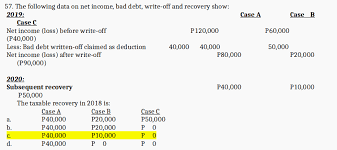How to Write Off Debt

While it can be difficult to write off debt, it is possible in some cases. This is a process that requires you to prove your circumstances and convince your creditor that you cannot afford to pay off the debt. If you do not have enough proof of your circumstances, your creditor may decide to collect the debt anyway.
The process of requesting a debt write-off involves asking your creditor to write off a portion or all of your debt. You can do this by calling them or submitting a written request. In order to receive a debt write-off, you must show your creditor that you are experiencing a financial hardship, including providing a monthly budget. You may also need to present proof of a health problem or other circumstance that makes repayment difficult.
After a certain amount of time has passed, a bank may write off a bad debt. This occurs when the borrower is unable to contact the lender and/or has not paid for over 90 days. Once the debt reaches this point, a bank may write off the account as a loss. However, that does not mean the borrower is no longer responsible for the debt; the bank may still try to collect the money or sell the debt to a collection agency.
Companies that write off their debts can avoid having to pay the tax on bad debts. However, this is not a simple process and can take months. Companies need to be proactive and keep tabs on their bad debt cases so they can take appropriate action. Once a business has decided to write off a bad debt, it must report this on its income statement.
While a write-off may sound appealing, it might not be the best solution for your specific needs. Instead, a more realistic option would be to create an Individual Voluntary Arrangement (IVA). Under this arrangement, you will be required to pay a specified amount to your creditors each month, usually for five years. After five years, the creditors will write off the rest of the unsecured debt. If you can make this commitment, you should be able to manage your debt in the long term.
Another way to write off your debt is to write it down. However, write-downs are different from asset write-downs. They involve reducing the amount that you pay for a good. For example, if you sell a particular item for 25% less than you paid for it, you write it down by that amount.
Another option that you can use to wipe out your debt is to offer the creditor a lump sum of money. This will wipe out the remaining balance of $5,000. The creditor will then consider the debt satisfied and forgive the remaining amount. However, you should be aware that a write-off will have tax implications.
How to Write Off Debt was first seen on Help with My Debt
